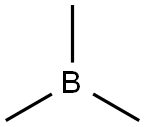POTASSIUM TRIETHYLBOROHYDRIDE
Synonym(s):Potassium hydrotriethylborate;Potassium triethylhydridoborate
- CAS NO.:22560-21-0
- Empirical Formula: C6H16BK
- Molecular Weight: 138.1
- MDL number: MFCD00011702
- EINECS: 245-077-3
- SAFETY DATA SHEET (SDS)
- Update Date: 2025-01-27 09:38:02

What is POTASSIUM TRIETHYLBOROHYDRIDE?
Chemical properties
CLEAR SOLUTION
The Uses of POTASSIUM TRIETHYLBOROHYDRIDE
- Reducing agent for synthesis of PtNi intermetallic nanoparticle catalysts with electrocatalytic activity
- Reducing agent for preparation of vanadium nanoparticles (~7 nm) stabilized on activated carbon
Reagent for:
- Preparation of lithium, sodium, and potassium boron monohydride complexes with tetramethylethylenediamine and pentamethyldiethylenetriamine
- Dehydrogenation reactions
- Tandem nucleophilic addition/C-C bond cleaving fragmentation reactions with cyclic vinylogous acyl triflates
- Preparation of coordinatively unsaturated pseudotetrahedral iron(II) precursors as precatalysts for the room-temperature hydrogenation of unsaturated hydrocarbons
- Substitution reactions
What are the applications of Application
Potassium triethylborohydride solution is an organoboron synthesis reagent
Properties of POTASSIUM TRIETHYLBOROHYDRIDE
| Density | 0.902 g/mL at 25 °C |
| Flash point: | 1 °F |
| storage temp. | Flammables + water-Freezer (-20°C)e area |
| form | Solution |
| color | Clear |
| Sensitive | air sensitive, moisture sensitive |
Safety information for POTASSIUM TRIETHYLBOROHYDRIDE
| Signal word | Danger |
| Pictogram(s) |
 Flame Flammables GHS02  Corrosion Corrosives GHS05  Exclamation Mark Irritant GHS07  Health Hazard GHS08 |
| GHS Hazard Statements |
H225:Flammable liquids H260:Substances And Mixtures Which, In Contact With Water,Emit Flammable Gases H302:Acute toxicity,oral H314:Skin corrosion/irritation H335:Specific target organ toxicity, single exposure;Respiratory tract irritation H351:Carcinogenicity |
| Precautionary Statement Codes |
P210:Keep away from heat/sparks/open flames/hot surfaces. — No smoking. P280:Wear protective gloves/protective clothing/eye protection/face protection. P231+P232:Handle under inert gas. Protect from moisture. P370+P378:In case of fire: Use … for extinction. P402+P404:Store in a dry place. Store in a closed container. P403+P235:Store in a well-ventilated place. Keep cool. |
Computed Descriptors for POTASSIUM TRIETHYLBOROHYDRIDE
New Products
4,4-Difluoropiperidine hydrochloride tert-butyl 9-methoxy-3-azaspiro[5.5]undecane-3-carboxylate Indole Methyl Resin N-Isopropylurea N,N-Dicyclohexylcarbodiimide(DCC) MELDRUMS ACID 5-METHYLISOXAZOLE-4-CARBOXYLIC ACID Magnessium Bis glycinate Zinc ascorbate 1-bromo-2-butyne 2-acetamidophenol 9(10H)-anthracenone Erythrosin B, 4-Piperidinopiperidine 2-((4-morpholinophenylamino) (methylthio) methylene) malononitrile 2,4-dihydroxybenzaldehyde 3-(4-morpholinophenylamino)-5-amino-1H-pyrazole-4-carbonitrile Methyl 2-methylquinoline-6-carboxylate 2,6-dichloro-4-nitropyridine 4-Bromo-2-chlorobenzonitrile 2-(benzylamino)acetic acid hydrochloride 4-(tert-Butoxycarbonylamino)but- 2-ynoic acid 3,4-dihydro-2H-benzo[b][1,4]dioxepine 1-Phenyl-1-cycloprppanecarboxylicacidRelated products of tetrahydrofuran








You may like
-
 22560-21-0 Potassium triethylborohydride 98%View Details
22560-21-0 Potassium triethylborohydride 98%View Details
22560-21-0 -
 Potassium triethylborohydride solution CAS 22560-21-0View Details
Potassium triethylborohydride solution CAS 22560-21-0View Details
22560-21-0 -
 3-(4-amino-1-oxoisoindolin-2-yl)-1-methylpiperidine-2,6-dione 98%View Details
3-(4-amino-1-oxoisoindolin-2-yl)-1-methylpiperidine-2,6-dione 98%View Details -
 614-19-7 98%View Details
614-19-7 98%View Details
614-19-7 -
 20677-73-0 (2,2-diethoxyethyl)methylamine 98%View Details
20677-73-0 (2,2-diethoxyethyl)methylamine 98%View Details
20677-73-0 -
 3-(4-(hydroxyamino)-1-oxoisoindolin-2-yl)piperidine-2,6-dione 98%View Details
3-(4-(hydroxyamino)-1-oxoisoindolin-2-yl)piperidine-2,6-dione 98%View Details -
 57381-49-4 2-bromo-4-chlorobenzonitrile 98%View Details
57381-49-4 2-bromo-4-chlorobenzonitrile 98%View Details
57381-49-4 -
 4,6-dichloropyrimidine-5-carbaldehyde 98%View Details
4,6-dichloropyrimidine-5-carbaldehyde 98%View Details
5305-40-8
Statement: All products displayed on this website are only used for non medical purposes such as industrial applications or scientific research, and cannot be used for clinical diagnosis or treatment of humans or animals. They are not medicinal or edible.
